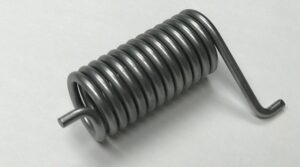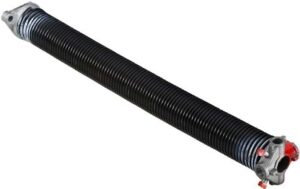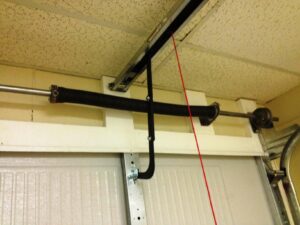What is a torsion spring?
 A torsion spring is a mechanical spring that stores and releases rotational energy. It is typically made of a strong, resilient material such as steel and is designed to exert a torque or twisting force when twisted or rotated around its axis. Torsion springs are widely used in various applications where rotational or torsional forces must be controlled or stored.
A torsion spring is a mechanical spring that stores and releases rotational energy. It is typically made of a strong, resilient material such as steel and is designed to exert a torque or twisting force when twisted or rotated around its axis. Torsion springs are widely used in various applications where rotational or torsional forces must be controlled or stored.
The basic design of a torsion spring consists of a helical or coiled shape, similar to a compression or extension spring. However, a torsion spring is designed to twist or rotate around its central axis instead of linear compression or extension. The ends of the spring are usually attached to other components, such as a shaft or a stationary object, while the body of the spring experiences torsional stress.
Torsion springs are commonly found in devices where rotational force is required, such as:
- Garage doors: Torsion springs help counterbalance the door’s weight and assist in its smooth opening and closing.
- Trampolines: Torsion springs are used to provide the bounce and elasticity needed for a trampoline.
- Clothespins: The torsion springs in clothespins allow them to grip clothes tightly.
- Automotive suspensions: Torsion bars, a type of torsion spring, are used in some vehicle suspensions to provide support and stability.
- Industrial equipment: Torsion springs are used in machinery, including hinges, clutches, and electrical switches, to provide torque or rotational force.
The characteristics of a torsion spring, such as its dimensions, wire diameter, number of coils, and material properties, are designed based on the specific application requirements and the amount of torque or rotational force needed.
How does a torsion spring work?

A torsion spring is a mechanical spring that exerts torque, or twisting force, rather than linear force like a compression or extension spring. It is typically made from a helical coil of wire or a flat metal strip wound in a spiral shape.
When a torsion spring is twisted or rotated around its axis, it stores mechanical energy in the form of potential energy. This energy is stored within the spring due to the elastic properties of the material it is made of. The amount of potential energy stored in the spring is proportional to the degree of twist applied to it.
Let’s consider a simple example to understand how a torsion spring works. Imagine a door with a torsion spring attached to it. When the door is closed, the spring is neutral with no twist. As you open the door, you apply torque to the spring, causing it to twist in the opposite direction. As the spring twists, it accumulates potential energy.
The potential energy stored in the torsion spring is a restoring force that tries to return the spring to its original position. This force opposes the applied torque and tries to rotate the spring back to its neutral position. As a result, when you release the door, the potential energy stored in the spring is released, and the spring exerts torque in the opposite direction, helping to close the door.
The amount of torque exerted by a torsion spring depends on factors such as the material properties of the spring, the dimensions of the coil or strip, and the degree of twist applied. These factors determine the spring constant, representing the relationship between the applied torque and the resulting angular displacement.
Torsion springs are widely used in various applications, including garage doors, household-door hinges, clothespins, mousetraps, and many mechanical systems that involve rotary or twisting motions. They provide a reliable and compact way to store and release mechanical energy in a controlled manner.
How does a torsion spring work on a garage door?

A torsion spring is a type of spring commonly used in garage doors to provide the necessary force to lift and lower the door. It works based on the principle of torsion, which is the twisting of an object due to an applied torque.
In a typical setup, one or two torsion springs are installed on a metal shaft above the garage door opening. The springs are tightly wound, creating torque or rotational force. This torque is stored in the spring when it is wound up.
When you manually lift the garage door or activate the motorized opener, cables attached to the bottom of the door pull on the drum or pulley at the ends of the torsion spring shaft. As the cables unwind from the drum, they create tension in the torsion spring.
The tension in the torsion spring stores potential energy. This energy is gradually released as the door is raised, counteracting the force of gravity and making it easier to open the door. When you close the door, the tension in the torsion spring is increased again, storing the energy needed to help lower the door.
The torsion spring system provides several advantages for garage doors. It allows for smoother and more controlled door movement, reducing strain on the door opener and other components. It also lets the door stay in place at any point along its travel path instead of free-falling or slamming shut.
It’s important to note that torsion springs are under high tension and can be dangerous if mishandled. Adjusting or replacing them should be done by a trained professional with the necessary tools and expertise.
